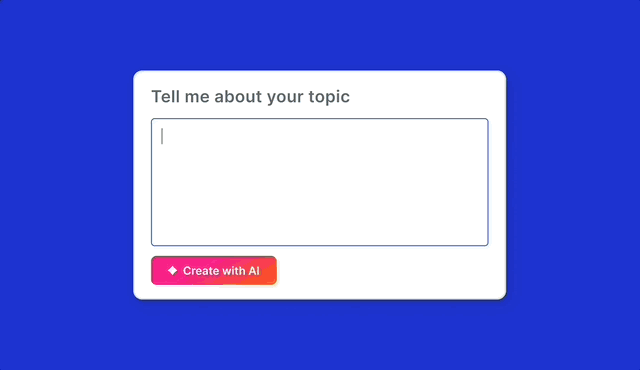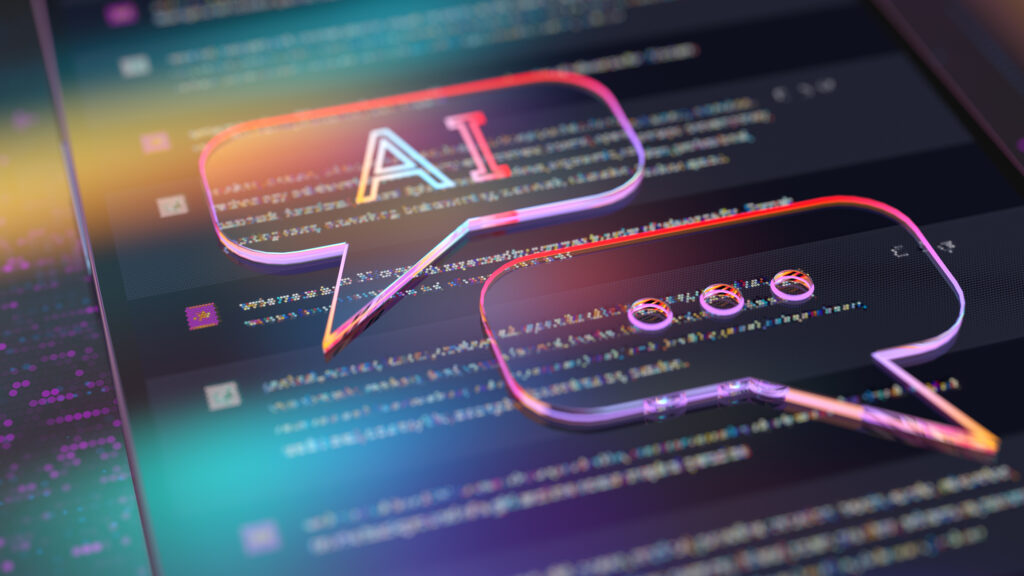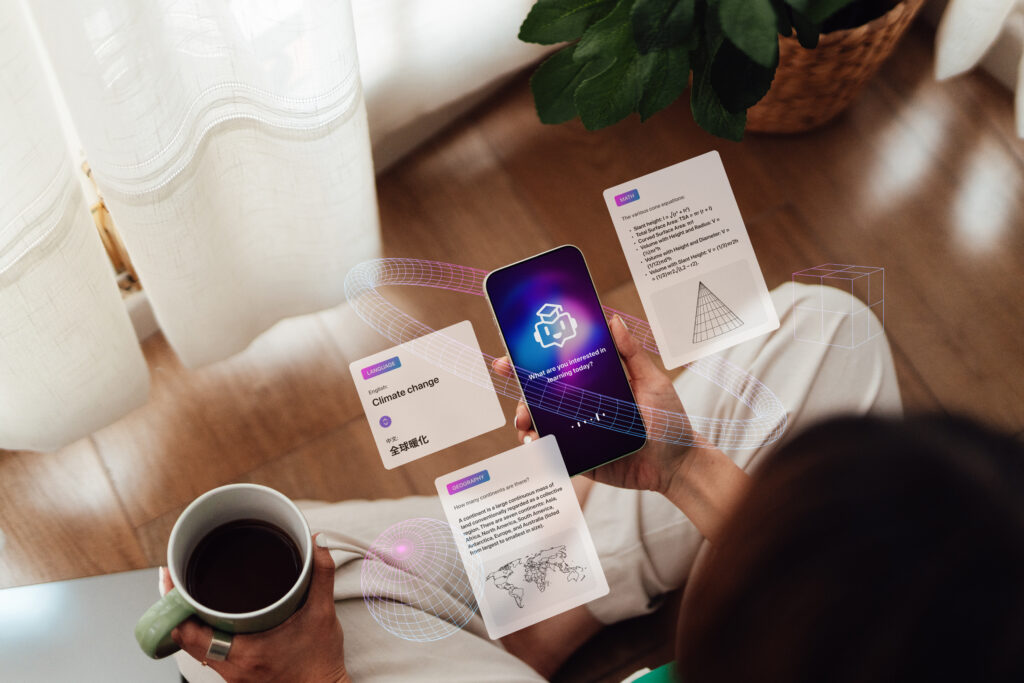Artificial intelligence is already a part of your students’ lives, whether it’s through social media filters, video game opponents, or the smart assistants on their phones. The question is no longer if AI belongs in education, but how we, as educators, can guide the conversation. Instead of feeling like you’re playing catch-up, you can lead the way by bringing these tools into your lessons with purpose and intention. This guide is designed to give you the confidence and practical steps you need to introduce AI for middle school classrooms. We’ll cover everything from tools to create lessons and assignments faster, like Prezi AI, and hands-on activities to teaching digital ethics.
What is AI, and how does it fit in the classroom?
Artificial intelligence is more than just a buzzword; it’s a powerful tool that’s already changing how we work, create, and learn. For educators, the question isn’t if AI will enter the classroom, but how to introduce it effectively. Bringing AI into your middle school curriculum can feel like a big step, but it starts with simple explanations and practical applications. Let’s break down what AI is, how it can support your teaching, and what it looks like in a real classroom setting.

How to explain AI to middle schoolers
When you hear “Artificial Intelligence,” you might picture futuristic robots, but the concept is much simpler. A great way to explain AI to your students is to describe it as technology that helps computers think and learn, a bit like humans do. Think about the smart assistants on our phones that recognize our voice or the way a video game opponent adapts to our strategy. That’s AI at work. It’s all about teaching machines to spot patterns, make decisions, and solve problems. By framing it with familiar examples, you can make a complex topic feel much more approachable and spark genuine curiosity in your students.
AI tools made for the classroom
Beyond being a fascinating subject, AI also offers a suite of tools to help you in the classroom. Imagine your students getting instant, detailed feedback on a writing assignment, helping them correct mistakes and understand concepts on the spot. That’s one of the biggest strengths of AI. These tools can also help you create supplementary content, like quizzes or study guides tailored to your lesson plan, or build new lesson plans and transform existing ones. Think of AI as a teaching assistant that handles some of the repetitive tasks, giving you more time to focus on what you do best: connecting with and inspiring your students. It’s about working smarter, not harder, to improve learning outcomes.

See AI in action: Real classroom examples
So, what does this look like day-to-day? You don’t need a degree in computer science to get started. Educators are already finding creative ways to integrate AI. For example, students can use AI-powered presentation makers like Prezi AI to turn their research into dynamic, visual stories from a simple prompt. In language arts, they can use translation tools to compare sentence structures across languages. Teachers can also use this tool to make their lessons more memorable for students. All they have to do is add a simple prompt or upload an existing document. Within seconds, Prezi AI has created a presentation for you, guaranteed to grab attention.

Bring AI into your curriculum
Integrating AI into your classroom doesn’t mean you have to overhaul your entire teaching plan. Think of it as a powerful new tool in your toolkit, one that can make learning more dynamic and relevant for your students. The key is to find natural ways to weave AI into your existing subjects, creating activities that are both engaging and educational. By starting small and focusing on specific learning goals, you can introduce AI in a way that feels manageable for you and exciting for your students. This approach helps build a foundation for deeper exploration, preparing students for a world where understanding technology is essential.
Use AI in any subject
One of the best things about AI is its flexibility. It’s not just for computer science class; it’s a versatile tool that can make almost any subject more engaging. Because AI can tailor content to different learning styles, it helps every student connect with the material. In English class, you could use an AI tool to generate creative story starters or analyze the tone of a poem. For history, students could ask an AI chatbot to act as a historical figure for an interview. In science, they could use AI to visualize data sets or model complex biological processes. The possibilities are truly endless and can fit right into your current lesson plans.
Design AI-powered lessons and activities
Feeling short on time? AI can be your co-pilot for lesson planning. Instead of starting from scratch, you can use AI to help create dynamic lessons, activities, and even presentations that capture your students’ attention. For example, you can use a simple prompt to have Prezi AI generate a complete, visually engaging presentation on photosynthesis or the branches of government in minutes. You can also use AI tools to create personalized quizzes that adapt to student performance or design interactive scenarios that let students apply their knowledge in a practical way. This frees you up to focus less on material creation and more on guiding your students.

Encourage group projects with AI
AI also opens up fantastic opportunities for collaboration. Group projects centered on AI can teach students valuable teamwork skills while they explore technology. You can create assignments that challenge students to work together to investigate how AI systems are built or to analyze the impact of algorithms on their daily lives. For instance, a group could research and present on the ethics of AI in social media or design a concept for an AI tool that solves a community problem.
The benefits of teaching with AI
Bringing AI into your classroom isn’t about replacing your expertise; it’s about adding a powerful assistant to your toolkit. Think of AI as a way to automate some of the time-consuming tasks so you can focus on what you do best: teaching and connecting with your students. When used thoughtfully, AI can help you create a more dynamic, supportive, and effective learning environment. It opens up new ways to tailor lessons, keep students invested, and prepare them for a future where understanding technology is essential. Let’s look at some of the most significant benefits you and your students can gain.
Create personalized learning paths
Every teacher knows that students learn at different speeds and in different ways. Meeting every student exactly where they are is a huge challenge, but AI can make it much more manageable. AI tools can adapt to individual student performance, offering extra help to those who are struggling or providing more advanced material for those who are ready to move ahead. This level of personalized learning ensures that every student is working with content that is both challenging and achievable for them. Instead of a one-size-fits-all lesson, you can create a more customized educational experience that keeps everyone engaged and moving forward at their own pace.

Engage students and give better feedback
One of the most immediate benefits of using AI is the ability to provide instant, detailed feedback. When students complete a quiz or an assignment, they can find out how they did right away instead of waiting days for you to grade it. This immediate response helps them understand their mistakes in the moment and learn from them while the topic is still fresh in their minds. Faster feedback also frees up your time, allowing you to focus on planning more creative lessons or providing one-on-one support where it’s needed most.
Build critical thinking and problem-solving skills
A common concern is that AI will do the thinking for students, but it can actually do the opposite. Integrating AI into your lessons encourages students to think more critically about information and technology. For example, when using an AI tool to generate ideas or text for a project, students must evaluate the output, check it for accuracy, and decide how to use it effectively. This process helps them develop essential skills like how to analyze information, make smart decisions, and approach challenges creatively. They learn that AI is a tool to collaborate with, not a magic box that gives perfect answers.
How to discuss AI ethics in the classroom
Introducing AI into your classroom is about more than just teaching students how to use a new tool. It’s a perfect opportunity to guide them in becoming thoughtful, critical, and responsible digital citizens. When we hand students a powerful technology, we also have a responsibility to help them understand its impact. This isn’t about scaring them away from AI, but empowering them to ask smart questions and use it with intention.

Talking about AI ethics means exploring some big topics, but you can make them accessible for middle schoolers. The key is to ground these conversations in their own experiences. By discussing concepts like data privacy, algorithmic bias, and what it means to use AI responsibly, you’re giving them the framework to think critically about all the technology they interact with, both in and out of school. These conversations help build a foundation for ethical technology use that will serve them for years to come. It’s a chance to learn together and shape a generation of conscientious tech users.
Talk about privacy and data security
When students sign up for a new app or use an AI tool, they’re often sharing personal information. It’s important to have an open conversation about what that means. You can start with simple questions: What kind of information does this tool ask for? Why do you think the company wants it? This helps them see that their data has value.
As educators, we need to be mindful of the privacy issues that come with student data collection. Always prioritize school-approved tools that have been vetted for security. Teach your students to be cautious about what they share online and to think of their personal information as something worth protecting. This simple awareness is a huge step toward safer digital habits.
Explain and handle algorithmic bias
An AI is only as good as the data it’s trained on. If that data reflects human biases, the AI will, too. This is algorithmic bias, and it’s a critical concept for students to understand. For example, some AI writing detectors have shown bias against non-native English speakers, unfairly flagging their work. This can have real consequences for students.
You can make this tangible with a classroom activity. Ask an AI image generator to create pictures of a “CEO,” a “nurse,” or a “scientist,” and have students analyze the results. Do they see stereotypes? Discussing why this happens helps them see that AI isn’t neutral. It encourages them to question the outputs of AI tools instead of accepting them as the absolute truth.

Discuss responsible AI and its impact
Using AI responsibly goes beyond just knowing the risks; it’s about making thoughtful choices. This means teaching students to properly cite AI-generated content, to use it as a starting point for their own work rather than a final answer, and to think about the real-world effects of this technology. A great presentation made with Prezi’s AI tools should still reflect the student’s own ideas and understanding.
Frame these as ongoing classroom conversations. What are the pros and cons of AI in art, medicine, or customer service? The goal is to equip students with the ability to weigh these factors for themselves. By emphasizing these ethical considerations, you’re preparing them to use AI not just effectively, but also with integrity and a clear sense of its place in the world.
Find the right AI tools and resources
Getting started with AI doesn’t mean you have to build a curriculum from scratch. There’s a growing ecosystem of tools, lesson plans, and training programs designed to help you bring AI into your classroom confidently. The key is to find high-quality resources that fit your teaching style and your students’ needs. Think of it less as adding another subject and more as integrating a new, powerful tool that can enrich what you’re already doing. From ready-made lessons to hands-on projects, the right resources can make teaching AI feel approachable and exciting for both you and your students.

AI learning platforms and software
You don’t need a background in computer science to teach the fundamentals of AI. Many platforms are designed specifically for middle schoolers and require no prior coding knowledge. These tools make abstract concepts tangible and fun. For example, you can find structured AI literacy lessons that break down complex topics into short, 15-minute activities. You can also use tools like Prezi AI to have students generate presentations on a topic, giving them a firsthand look at how AI can be used as a creative partner. The goal is to give students a safe and guided environment to explore and understand the technology that’s shaping their world.
Plan hands-on AI projects
The best way for students to learn about AI is by doing. Hands-on projects turn students from passive consumers of technology into active creators and critical thinkers. A great project doesn’t just focus on the tech; it explores how AI systems are built, their impact on people, and the ethical questions they raise. You can find AI curriculum with ready-to-go projects for all skill levels. Start with something simple: challenge students to use an AI tool to create a story, design an image, or research a historical event. This helps them understand the capabilities and limitations of AI while building valuable skills.
Find professional development for teachers
As AI continues to evolve, staying informed is essential. Taking the time for professional development will help you feel more comfortable with the tools and their applications in your classroom. It’s not just about learning how to use a new app; it’s about understanding how to guide students through the ethical considerations of AI, like privacy, bias, and responsible use. Look for workshops or online courses that offer practical strategies for classroom integration. Many organizations provide resources to help educators learn about using technology responsibly and effectively, ensuring you’re prepared to lead these important conversations with your students.
How to handle common AI challenges
Bringing AI into your classroom is exciting, but it’s not without its hurdles. From unequal access to technology to the learning curve for educators, these challenges are real. But with a thoughtful approach, you can address them head-on and create an inclusive, effective AI-powered learning environment for everyone.

Close technology gaps and ensure equity
Not every student has the same access to technology at home. A significant digital divide means some students may not have the computers or high-speed internet needed to use advanced AI tools. To ensure equity, focus on what you can control in the classroom. Prioritize AI projects that can be completed on school devices and explore tools that work well on less powerful hardware or mobile phones. You can also design activities that blend online and offline work, so students without reliable home internet aren’t left behind. The goal is to make AI an opportunity for all, not a barrier for some.
Get teachers comfortable with AI
It’s completely normal to feel a little behind your students when it comes to new tech. In fact, one survey found that while 27% of students use generative AI regularly, only 9% of instructors do. Closing this gap starts with getting curious and giving yourself permission to learn. You don’t have to become an expert overnight. Start small by using an AI tool to help you build your next lesson plan or presentation. Ask your school about professional development opportunities, and connect with other educators to share what works. Your confidence will grow with every new tool you try, turning uncertainty into a new skill.
Blend AI with traditional teaching
The most successful AI integration doesn’t replace traditional teaching—it enhances it. Think of AI as your co-pilot. It can help you create personalized lessons and activities tailored to different learning styles, freeing you up to focus on what you do best: connecting with students. For example, you could use an AI tool to generate a first draft of a story prompt or a historical summary. Then, have students use their critical thinking, research, and collaboration skills to fact-check, expand, and refine the content. This approach blends the efficiency of AI with the irreplaceable value of human creativity and analysis.
Prepare your students for the future
Teaching AI in your classroom does more than just introduce a new piece of technology. It’s about setting your students up for success in a world that is rapidly changing. By integrating AI into your lessons, you’re not just teaching a subject; you’re building a foundation of skills, curiosity, and adaptability that will serve them for years to come, no matter what career path they choose. This is your chance to guide them as they learn to use these powerful tools thoughtfully and effectively.
What’s next for AI in education?
Generative AI has opened up a whole new world for everyone in education, and its power is undeniable. Instead of viewing it as a disruption, we can see it as a new layer of the educational experience. For educators, this means getting familiar with what these tools can do. Understanding the pros and cons of artificial intelligence in education is the first step to making informed decisions for your classroom. The future of education will likely involve a blend of traditional teaching methods and AI-driven tools that help personalize learning and make your job a little easier.
Teach the skills for future careers
Learning about AI isn’t just for future software developers. It helps students build crucial skills like problem-solving and critical thinking that are valuable in any profession. When students work with AI, they learn to ask better questions, evaluate information, and think creatively about solutions. The World Economic Forum even predicts a 71% growth in AI and machine learning jobs in the next five years. By introducing AI concepts now, you’re giving your students a significant head start and opening their eyes to a wide range of future job opportunities they might not have considered otherwise.
Inspire a love for lifelong learning
AI is a technology that is constantly evolving, which makes it the perfect subject for inspiring lifelong curiosity. When you teach students about AI, you’re not just giving them facts to memorize; you’re inviting them to explore a field that is actively shaping their world. This approach addresses a growing need to educate young people about the technologies that impact their lives. By encouraging students to engage with AI, you help them develop a mindset of continuous learning and adaptation.
Lead the way in the age of AI
AI is meant to empower teachers. By introducing AI into your middle school classroom, you’re not just keeping up with change; you’re shaping it. From saving time on lesson prep to creating more engaging and personalized learning experiences, AI can help you focus on what matters most: inspiring curiosity, creativity, and critical thinking in your students. The best way to understand its potential is to start experimenting for yourself.
With Prezi AI, you can turn any idea or lesson plan into a stunning presentation in minutes—no design skills required. It’s an easy, engaging way to bring complex topics to life and show students what AI can do as a creative partner. Try Prezi AI for free and see how it can transform the way you teach, learn, and inspire your classroom.
